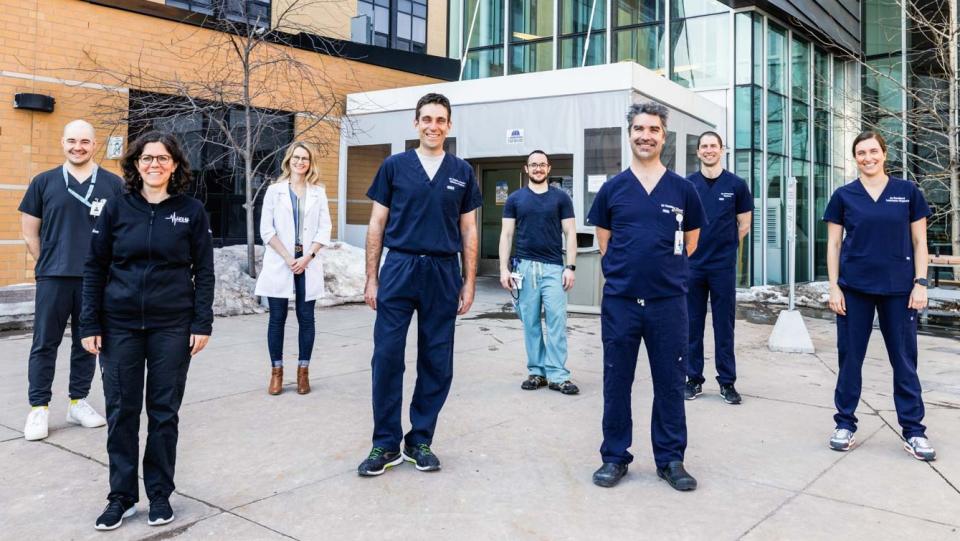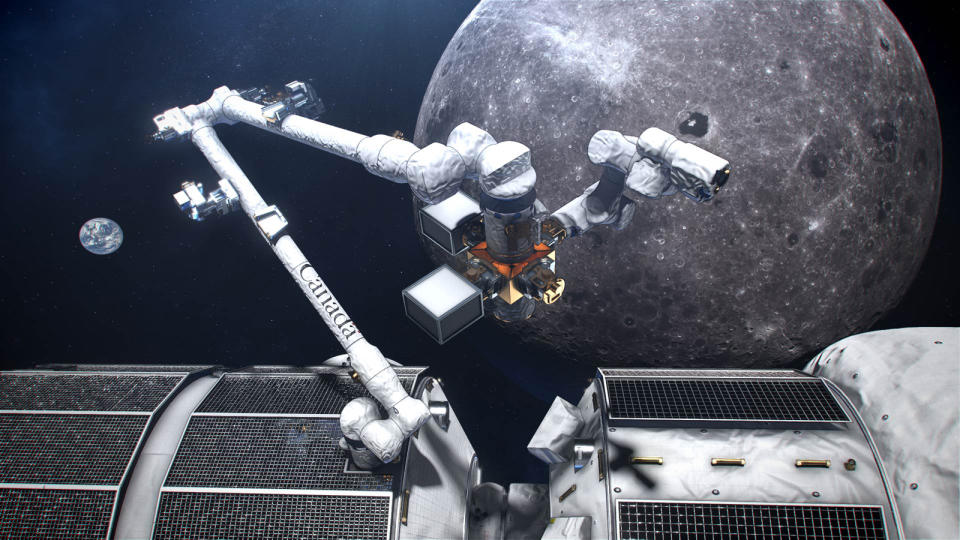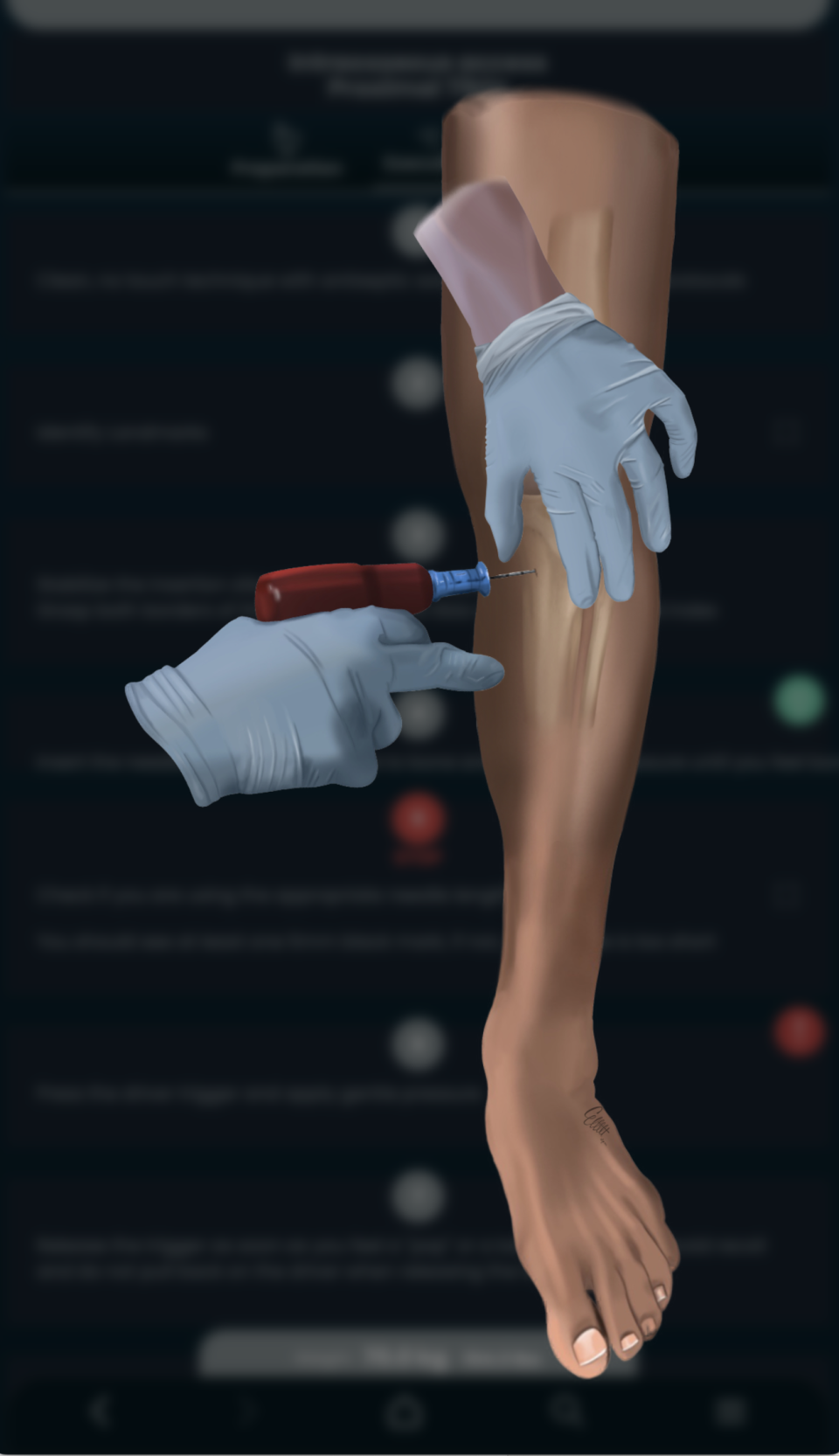If astronauts fly to the moon or Mars, how do we deal with medical problems so far from home?
The finalists of a technology challenge from the Canadian Space Agency and Impact Canada want to use the medical knowledge from working with remote communities – such as indigenous groups in Canada’s far north – to help astronauts in deep space.
The five finalists for the Canadian government’s Deep Space Healthcare Challenge gave presentations in Montreal on Tuesday (Nov. 21), explaining why their technology could one day be worthy of a space mission. At stake for the future winner is a rich purse of half a million dollars in Canadian dollars (approximately $365,000 USD).
“What was really interesting was to actually apply the physical limitations of space” to medical practice, competition participant and emergency physician Frédéric Lemaire told Space.com. Lemaire, who works at Charles-LeMoyne Hospital on Montreal’s south shore, is one of 32 people working on EZResus’ resuscitation app. The tool, from the nonprofit Applications MD, provides instructions for this essential medical procedure if you’re far from help.
Related: Can we live long and prosper in space? The astronaut health dilemma
The CSA is one of the partners for NASA’s Artemis program missions to the moon, which aim to land astronauts there in 2025 or 2026. (Some Artemis partners, however, have signed up for NASA-led standards for peaceful space exploration rather than immediate lunar missions.)
People are already heading to lunar regions: Artemis 2, including CSA astronaut Jeremy Hansen and three NASA astronauts, will fly around the moon in 2024. (That’s in addition to other space missions the CSA is making to the International Space Station, including new Canadian astronaut assignments just announced on Wednesday, November 22.)
But far away from Earth, on a spacecraft with limited resources, astronauts will have to use all their skills to keep each other healthy. The challenge aims to create highly wearable technology that allows rapid diagnosis and treatment in case of health problems. Like a tricorder from “Star Trek,” the astronauts can then use that information to keep each other safe and healthy when problems arise.
The competition is part of the CSA’s goal to empower astronauts to take care of their own health with up-to-date tools, the agency’s Annie Martin told Space.com. Martin is a portfolio manager for CSA’s Health Beyond Initiative, which includes this competition and other projects.
“We asked innovators to look at solutions that can support and help Canadians now,” she said, considering lunar and Mars missions as well as near-term needs. “We were very excited to see all these technologies that have concrete applications.”

Martin outlined numerous problems that make it difficult to carry out medicine in space. Examples include communication delays of seconds or minutes depending on how far you go; the fact that an emergency evacuation would take days, weeks or months; and providing the right training for everyone on a mission, as not everyone is natural medical professionals.
Tools are on the way, such as artificial intelligence – the CSA plans to use these anyway on future space missions, such as the upcoming Canadarm3 robotic arm for the NASA Gateway space station on the moon. And good Earth experiences could also be brought to bear on space missions, ranging from serving remote indigenous communities to helping soldiers deploy in harsh environments.


On the “big day” for the finalists on Tuesday, the five groups presented their solutions and offered a live demonstration to the jury. They have received support from CSA officials during the last few phases to facilitate development (for example, the EZResus team spent an hour with CSA’s chief physician a few months ago).
But meeting the teams in person one last time and allowing the teams to speak together was a conscious choice, because the CSA “wants to promote collaboration, because innovation does not exist in isolation,” Martin emphasized.
Martin joked that selecting a winner from the quintet of finalists would be like selecting her favorite child. While there are no plans to further develop the technology through CSA after the winner has been declared, companies are welcome to apply for future opportunities. An example could be the agency’s Space Technology Development Program, which better prepares early-stage projects for spaceflight.
RELATED STORIES:
— Maple leaf to the moon: Canadian Space Agency introduces new logo
– Canada will launch new satellites to monitor climate change and collect military data
— What the first Canadian astronaut on a moon mission learns from his crewmates (exclusive)
All finalists have been working on their proposals for about two years, after submitting their work for the first phase of the competition in February 2022. But some ideas have been in the works for much longer.
EZResus is essentially a continuation of an earlier app called EZDrips, which itself grew out of a “tough case” Lemaire faced a decade ago. His team was struggling to resuscitate a child at the time, and there was no app at the time that gave him a calculation to determine the correct dosage of medicine.
“We were trying to do the calculation with an enormous amount of stress, because the child is dying, right?” Lemaire remembered. “We finally did it. The boy was doing well, but in the end I thought: ‘We have to do something about that’.”


The initial call for competition ideas was narrowed down to twenty semi-finalists, announced in April 2022. After a proof of concept was presented to the judges, the group was narrowed down to the five finalists in April 2023.
Evaluation criteria include how effective the solution is at detecting or diagnosing medical problems, as well as other metrics such as innovation, increasing remote crew autonomy, reliability and ease of use.
The judges will spend the coming months reviewing the entries submitted today to declare the grand prize winner in early 2024. The other finalists, according to Impact Canada’s website, include:
-
Center for Surgical Invention and Innovation: An autonomous robotic system capable of screening, point-of-care diagnosis and treatment of early cancers, which can be operated remotely or without human intervention if necessary.
-
IndigenousTech.ai: Autonomous AI-driven software and imaging device that can be linked to a smartphone for remote monitoring and diagnosis of skin conditions, under the remote supervision of a specialist dermatologist.
-
SieVRt Cardiac: A comprehensive reality platform for remote radiology and the diagnosis and monitoring of cardiovascular diseases.
-
Neursantys: The Neurvesta wearable device enables remote detection and correction of neurovestibular and sensorimotor disturbances caused by aging, injury, disease and exposure to microgravity environments.